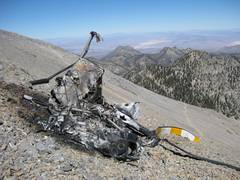Helicopter crash on Charleston; curious science
http://www.lvrj.com/news/breaking_news/ ... 80722.html
"Due to higher density altitude, the helicopter 'thinks' it’s higher than it really is, Lorenz said.
'In layman’s terms, if you’re outside and cutting the grass on a normal day you’re going to be fine, but if you’re outside cutting the grass in 110-degree temperatures, you’re not going to perform at your best,' Lorenz said."
That higher density altitude is dangerous stuff.
"Due to higher density altitude, the helicopter 'thinks' it’s higher than it really is, Lorenz said.
'In layman’s terms, if you’re outside and cutting the grass on a normal day you’re going to be fine, but if you’re outside cutting the grass in 110-degree temperatures, you’re not going to perform at your best,' Lorenz said."
That higher density altitude is dangerous stuff.

